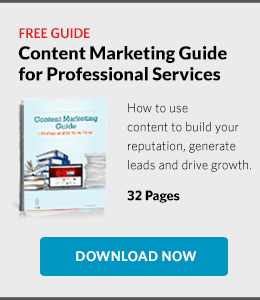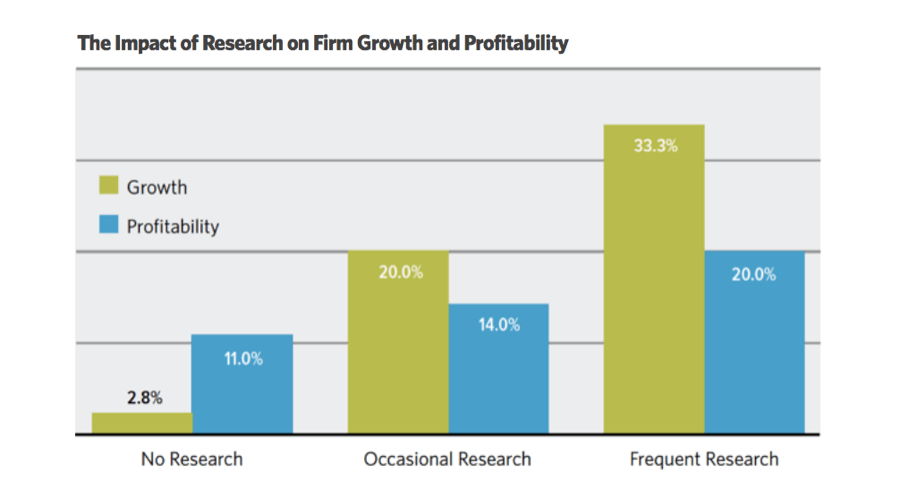Not everyone who connects with your firm is an actionable lead. Whether they have engaged with your firm through social media, your website, your blog, or other channels, many of these folks will live at the top of the sales funnel forever. That’s natural – these audiences will nonetheless help contribute to your reputation and visibility in the marketplace by sharing or talking about your expert content.
But for those who do make their way down the funnel, the story isn’t over. Many will be ideal clients, but the truth is that not all of those leads are worth the efforts of your sales team. And it’s important to be able to identify the real opportunities.
The clients of management consulting firms are in the market for solid, actionable advice. You wouldn’t feed them guesswork or suggest they try any and every old thing. Yet many firms take a scattershot approach to marketing. When it comes to your own marketing and lead curating efforts, take your own best advice. Do some research and qualify the best options before investing further. Only pursue the best-qualified leads.
Here’s a breakdown of how to analyze potential clients and gauge their true interest in your services:
1. The Suspect

You have some reason to suppose suspects are interested. They’ve visited your website (though possibly only once). They follow your company on LinkedIn (though maybe they’re just looking for a job). Perhaps they’ve commented on your blog (and everyone else’s).
Suspects have made some sort of connection, but it’s difficult to know their motives. Their vertical might not mesh with your services, or they might be 5,000 miles away. They may have simply stumbled across your page while researching something tangential to your industry. It’s much too soon to call them a lead.
2. The Prospect
Good thing you kept an eye on that suspect – they’ve continued to haunt your site. They’ve downloaded a guide or research report from your website. Maybe they’ve subscribed to an email newsletter. You have details about them, such as contact information, demographics, and other data gathered when they accessed gated premium content.
The prospect may not be quite ready to sign up for your services, but they do appear to be interested in information presented in your content marketing. In short, you might be able to solve their problems. It’s too soon to say for sure, but there is potential here.
SEE ALSO: Top 5 Business Challenges for Management Consulting Firms
3. The Lead
Now we’re talking. These are prospects that not only fit important demographic and geographic criteria, but also have the ability to buy—and they are definitely interested in you. They’ve registered for and attended one of your webinars and they’ve opened your emails. The lead seems genuinely interested in your firm and your services.
When you speak with a lead, ask thoughtful questions meant to uncover their needs, determine their decision-making process, and discover the criteria they’re looking for in service providers. A conversation can pay off in ways that a single-sided hard sales pitch can’t.
4. The Opportunity
They’re knocking. This is a warm lead with an identified need that your firm can address. They have the required budget to sign on as a client and the authority to seal the deal. What’s more, the opportunity has asked for a strategic consultation or other preliminary meeting with one of your in-house experts. Perhaps they’ve submitted a request for further contact via an online form, email, or by phone.
The opportunity has learned about your services as their needs have developed, and now they are ready to do business.
It’s likely that you see a lot more suspects than opportunities. That’s par for the course. But if you’re noticing virtually all suspects and prospects, with no leads or opportunities emerging, it might be time to reconsider your content marketing strategy. For starters, take a look at whom you’re targeting—and through what channels.
Understanding and Targeting Your Audience
Content marketing is great at filling your funnel with folks from all four categories—if your content is relevant. To make sure of this, you have to know your audience. This means doing research to uncover their needs, their challenges, and what they value most. If this sounds too tough or time-consuming, consider the payoff:
- Firms that do occasional marketing research experience about six times the growth—and a 50% increase in profitability—compared to competitors that do no research.
- Firms that do frequent research (at least once per quarter) experience more than ten times the growth and double the profitability of firms that don’t do market research.

Remember that there are lots of ways to educate your audience. Part of your research should include finding out how your prospects like to engage with content. You should also be willing to present similar information in multiple formats to accommodate their preferences. Take the ideas within a whitepaper and present them via a webinar or offer a series of videos that illustrate the major points of an executive guide.
Consider timing as well. Your audience might not want to read a detailed new whitepaper each week, nor could you likely produce one so frequently. But a blog post or a new video segment in a series presented weekly will keep your audiences continually engaged. Look at your calendar of upcoming projects, conferences, and other key events. Whenever applicable and possible, tailor your content to feed into initiatives that will interest your clients.
Whatever timeframe you choose, make sure you’re able to keep the pace for the foreseeable future. Marketing campaigns are most effective when sustained. Losing momentum on your end will translate to a loss of momentum in lead generation.
In the end, the goal isn’t just to generate leads – it’s to gain new clients. But this can’t be done without careful consideration of prospects’ needs, and by illustrating just how you can meet their needs with thoughtful, relevant content.
To create content that reaches prospects at each stages of the sales funnel, download a free copy of the Content Marketing Guide for Professional Services.
On Twitter or LinkedIn? Follow us @HingeMarketing and join us on LinkedIn.


